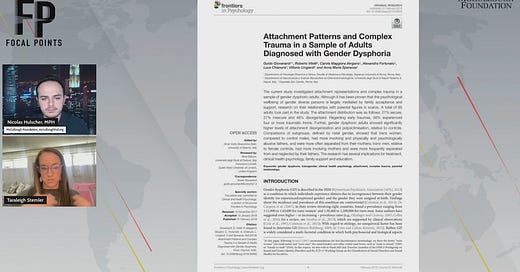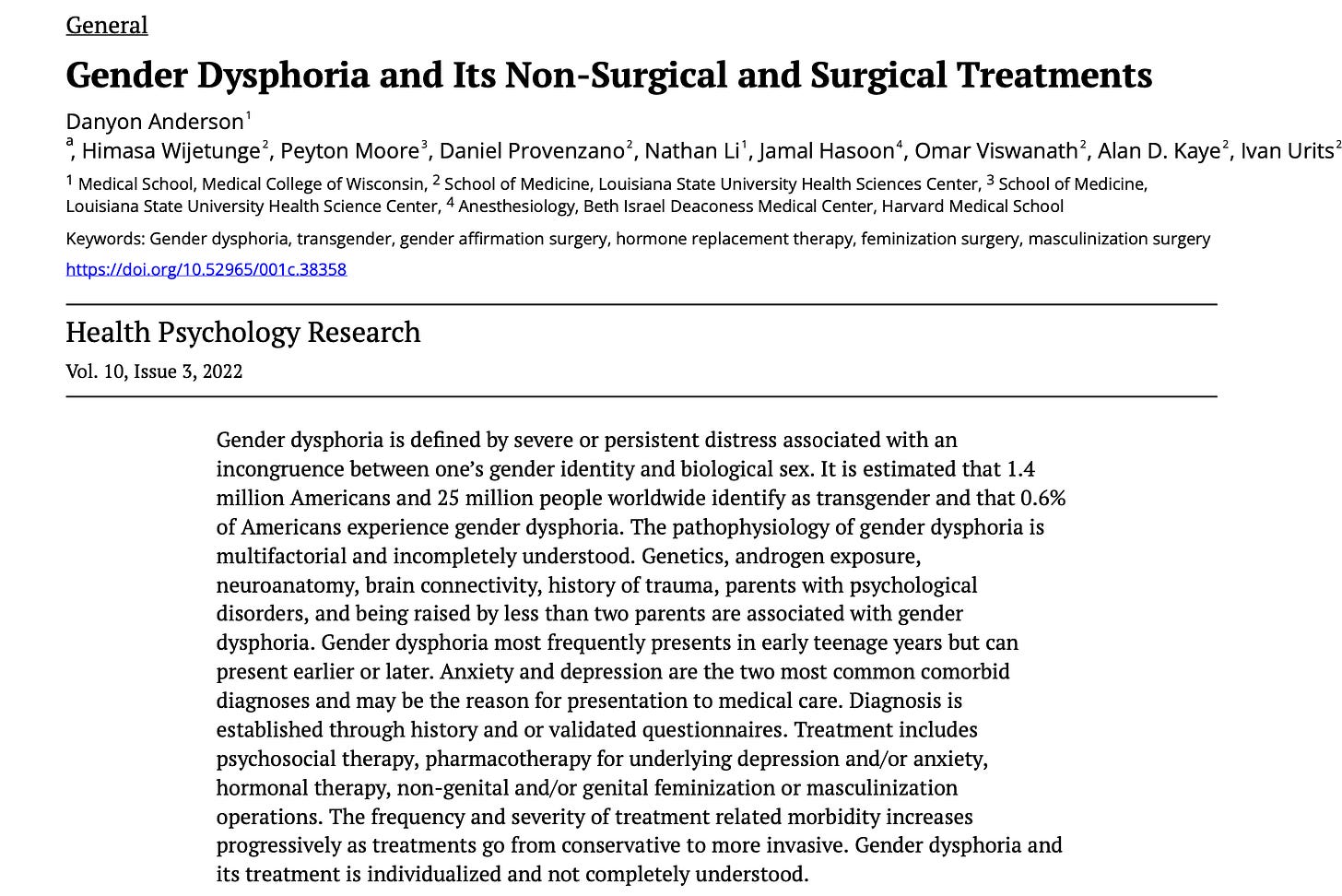Taraleigh Stemler is a Licensed Marriage and Family Therapist (LMFT), trained in EMDR (Eye Movement Desensitization and Reprocessing) and certified as an Integrative Mental Health Professional (CIMHP). With nearly a decade of trauma-focused experience in private practice, Stemler emphasizes systemic, evidence-based care that supports healing, self-regulation, and personal agency.
Key Points from the Interview:
Rise in Transgender Identification
Stemler suspects a social contagion effect is partly responsible for the rapid increase in transgender identification across generations.Overlooked Trauma in Gender Dysphoria
Cites a 2018 Italian study by Giovanardi et al:56% of participants with gender dysphoria had experienced four or more forms of trauma by adolescence.
In contrast, only 7% of the control group reported that level of trauma.
Trauma types included emotional/physical neglect, abuse, exposure to violence, separation, and loss.
Contradictions & Lack of Trauma Focus
A 2022 study on gender dysphoria treatment claims that the only treatments are:Psychosocial therapy (to SUPPORT transition)
Hormone replacement therapy
Non-genital and genital surgeries
Stemler notes none of these options address childhood trauma or attachment issues.
None of these “treatments” attempt to reaffirm biological sex.
Commercial Incentives Behind Gender Transition Care
Hormone therapy is a $1.6 billion industry in the U.S. (2023), projected to grow steadily.
Sex reassignment surgery reached $2.1 billion in 2022 with 11.25% CAGR through 2030.
Stemler criticizes the “lifetime client” model, where individuals require ongoing support, generating long-term revenue for providers.
Parallels with COVID-19 Response
Draws a comparison to early COVID-19 treatment narratives—limited options, suppression of alternatives, and pharmaceutical profit motives.Alternative, Trauma-Informed Approach
Stemler suggests exploring:EMDR (Eye Movement Desensitization and Reprocessing)
Somatic therapies (e.g., trauma-informed yoga, breathwork)
Assessment of early attachment wounds and dissociative coping
Clinical Insight: Gender Dysphoria as Trauma Response
Suggests gender dysphoria may often represent a dissociative escape from the body in which trauma was experienced.Case Example of Detransitioner
Shares the story of Max Lazzara: multiple traumas, suicide attempts, emotional abuse, and eating disorders preceded the decision to transition. Stemler underscores that trauma treatment might have been a more appropriate intervention.Final Message to Parents & Clinicians
Don’t panic.
Prioritize trauma-informed alternatives to reaffirm biological sex over dangerous medical transitions.
“Let’s stop funding the industry profiting from pain. Explore healing first.”
To find out more, you can visit Taraleigh’s website and Instagram page:
Website: www.tscounseling.com
Instagram: @ts_counseling
Epidemiologist and Foundation Administrator, McCullough Foundation
www.mcculloughfnd.org
Please consider following both the McCullough Foundation and my personal account on X (formerly Twitter) for further content.
Listen to this episode with a 7-day free trial
Subscribe to FOCAL POINTS (Courageous Discourse) to listen to this post and get 7 days of free access to the full post archives.














